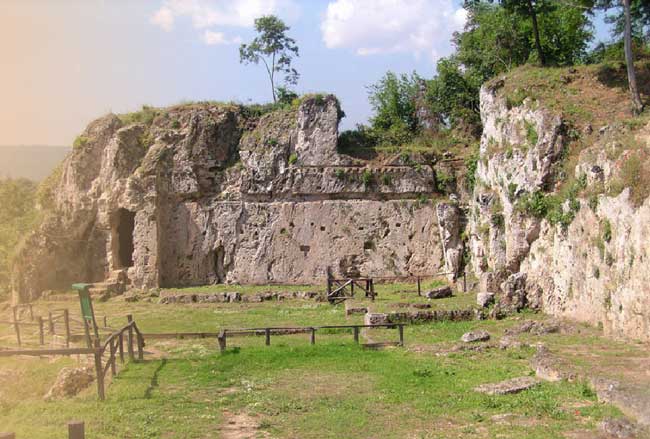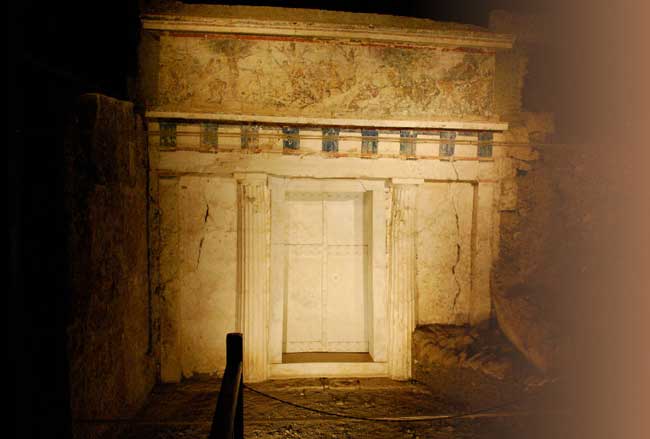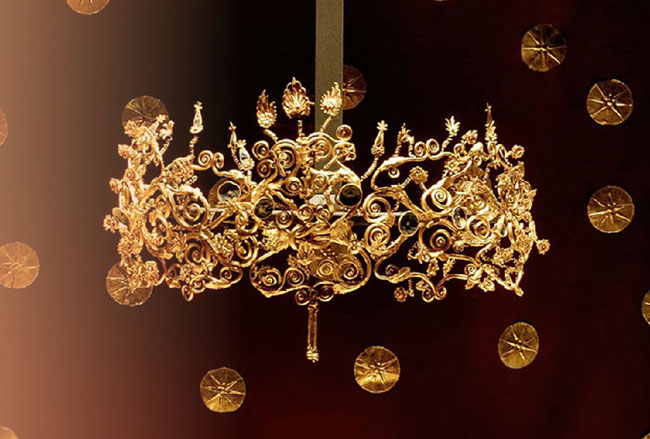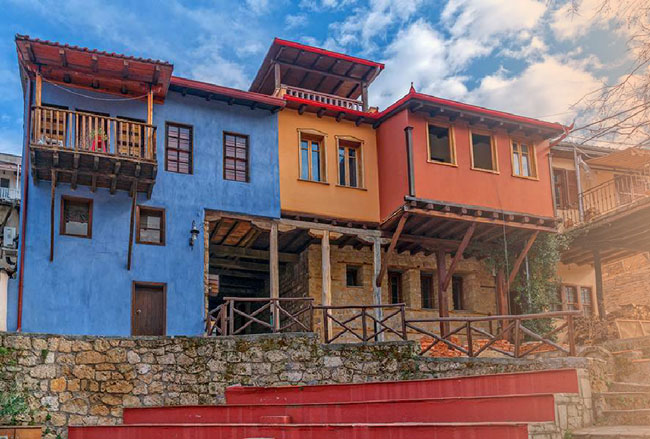The Cultural & Technical Tour will take place on Thursday, June 2. The tour will encompass guided tours at Aristotle’s School Cultural Center and at the Tombs of King Philip II, (Vergina Museum), a UNESCO World Heritage. The daily excursion will additionally include free time at the city of Veria.
Aristotle’s School
Cultural Center
Mieza was one of the most important Macedonian cities of Vottiaia, on the northern site of Vermio, between the two capitols of ancient Macedonia, Aiges and Pella and near Veria and Edessa. It was located near Naoussa, between the villages of Kopanos, Lefkadia and Hariessa.

It was stretched across the flat eastern banks of Vermio, below the modern city of Naoussa. The city of Mieza was surrounding by rich vegetation, while the waters that flow from Vermio make the surrounding countryside fertile even today. The largest river that descends violently from Naoussa is what is today Known as Arapitsa, a river that was called in ancient times Organos. Olganos was the brother of Mieza and Veria, who were the children of Veris, the mythical king of the broad region. The names of the two neighboring cities Veria and Mieza were taken from the names of his two daughters, while Olganos was transformed into a river god and left his name to the river that ran through the city and flows close to the city of Kopanos today.
The name of Mieza was famous more for the presence of two personalities in the region. In Nymfaio of Mieza, in the middle of the fourth century B.C., two top personalities met: the military and political legend of the ancient world, Alexander and one of the greatest philosophers of history, Aristotle, who was Alexander’s teacher. The presence and influence of these two great men has sealed the prestige and brought glory to the Macedonian city.
The Macedonian King Filipe chose a famous and “ completely educated” teacher, the philosopher Aristotle for the complete and entire education for his son, Alexander. The philosopher was 40 years old and the student 13 years old. Aristotle initiated the young Alexander into philosophy and politics, he taught him: “ethical and political reason”. With him were approximately 15 young noblemen of the same age, young children of the Macedonian aristocracy who comprised the class of the great teacher. The School of Aristotle in Nymfaio of Mieza was functioned for almost three years. In Mieza, as wrote the distinguished research of the ancient secretariat, Albin Leski, “the King of science became the teacher of the future king of the world”.
Tombs of
King Philip II

Located in Vergina (32 km from Naoussa) has enjoyed worldwide recognition in the past few decades, owing to the discovery there of the ancient city of Aigai, the ancient capital of the Macedonian kings, and its cemetery. Aigai was the first city of the Macedonians and the core of their ancient kingdom. It is the place where the royal family of Philip II and Alexander the Great reigned for more than three hundred years. Aigai was the mythical, religious, political and artistic cradle, from which Hellenic civilization spread throughout the entire World.
The Palace of the ancient city, the biggest building of the Classical Period and the archetype of the buildings with colonnaded courtyard, was founded by Philip II, in the mid 4th century B.C. Its imposing, yet austere architecture is a unique crystallization of everything that characterized the Macedonian King and his kingdom: an enlightened realm of divine origin, accessible and fair to everyone, destined to endure and to serve as a model of governance.
The theatre and the sanctuary of Eukleia, located near the Palace, shaped the monumental character of the royal complex, while the sanctuary of the Mother of the God occupied a prominent position in the centre of the ancient city. The Necropolis of the ancient city lies outside the city walls. The oldest section, the Cemetery of the Tumuli (11th-7th century B.C.) testifies that the region was already at the time a significant centre and provides the visitor with one of the most attractive and authentic images of the ancient cemetery. The tree clusters of royal tombs excavated thus far, include the last dwelling places of the famous kings and the members of their families. The Macedonian tombs of Queen Eurydice, her son Philip II and her great- grandson Alexander VI are remarkable for their splendid architecture.

The tombs and the wealth of funerary offerings they contained, preserved intact – and for the first time- works of highly –skilled artists comprising almost every aspect of Greek classical art: polychrome wall paintings covering huge surfaces, miniature portraits of historical figures, as well as pottery, silver and gold, textiles and weapons and armour.
Due to the importance and historical significance of these monuments, the archaeological site of Aigai (now called Vergina) has been proclaimed a UNESCO World Heritage Site.
The City
of Veria

Veria is a vibrant city and the capital of Imathia, located 20 km away from Naoussa. During the 2-hour free time stay in Veria, delegates may visit the commercial center of Veria and explore dairy and local agricultural product markets that introduce visitors to the local tradition and culture. Τhe main pedestrian shopping area, with many shops and cafès, in a modern city center, presents strong economic, social and cultural activity.
Veria is the only city in Greece which is friendly to the pedestrians, giving priority to them even without traffic lights and one of the few cities in Greece providing a free wireless network downtown. Veria has two characteristic squares, landmarks of the city, the “Elia” square with great views of the plain of Imathia and “Orologiou” or “Raktivan” square. Additional information about the City of Veria can be retrieved at discoververia.gr